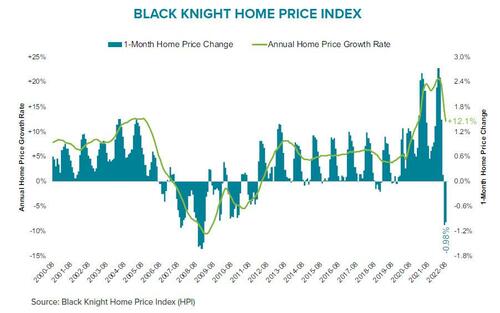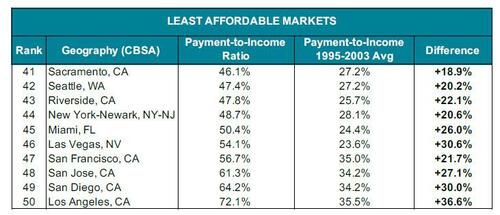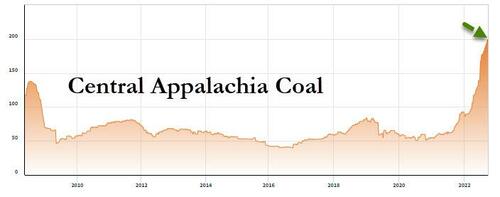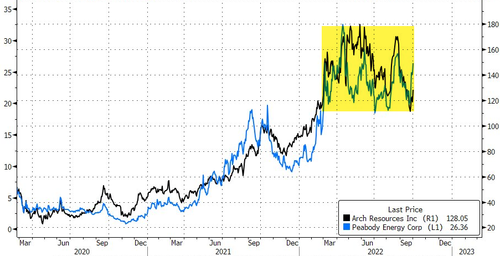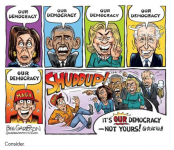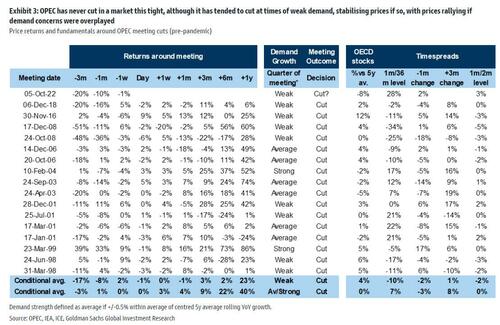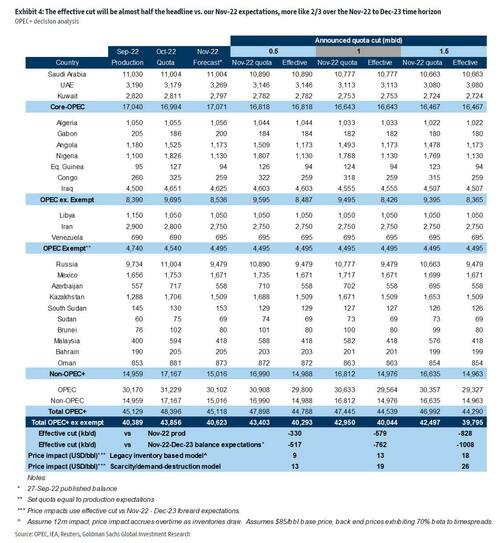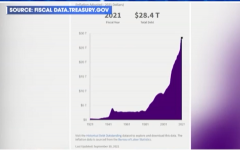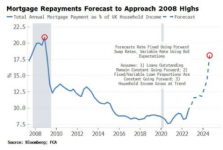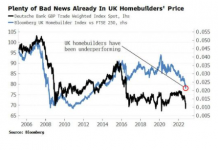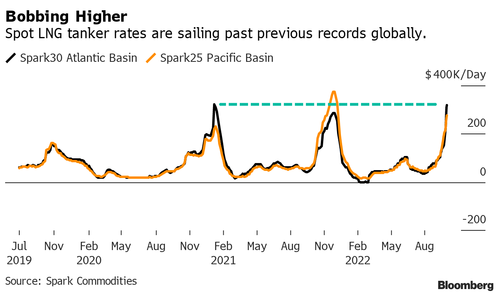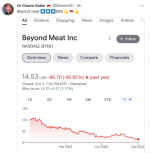Darren Beattie: Biden's Attack On Southern Memorials Remove The History Americans Fight For 8:32 min
Darren Beattie: Biden's Attack On Southern Memorials (Arlington Cemetery) Remove The History Americans Fight For
Bannons War Room Published October 3, 2022
^^^^
After spending two decades losing wars abroad, America's military leadership are now preparing to desecrate America's military dead.

www.revolver.news
EXCLUSIVE
Biden’s War on Southern War Memorials Has Backfired: Have Southern Service Members Had Enough?
September 29, 2022 (4d ago)
America’s military leadership has spent the past two decades disgracing the U.S. armed forces. Now they are prepared to desecrate America’s military dead.
An independent commission is recommending that the Confederate memorial at Arlington National Cemetery be dismantled and taken down, as part of its final report to Congress on the renaming of military bases and assets that commemorate the Confederacy.
…
[Retired Army Brig Gen Ty] Seidule said the panel determined that the memorial at Arlington was “problematic from top to bottom”. He said the panel recommended that it be entirely removed, with only the granite base remaining.
The statue, unveiled in 1914, features a bronze woman, crowned with olive leaves, standing on a 32ft pedestal, and was designed to represent the American south. According to Arlington, the woman holds a laurel wreath, a plow stock and a pruning hook, with a biblical inscription at her feet that says: “They have beat their swords into plough-shares and their spears into pruning hooks.”
This decision (if it comes to pass) is an atrocity. The monument at Arlington is indisputably a brilliant work of art, of the sort America is incapable of replicating today.
The statue is the masterwork of Moses Jacob Ezekiel, one of America’s first and most noteworthy Jewish artists. Before his sculpting career, Ezekiel was the first-ever Jewish cadet at the Virginia Military Institute, and was one of the 247 mostly-teenaged cadets who immortalized themselves at the Battle of New Market, the only time in American history that a school’s student body deployed as a combat unit. For Ezekiel, the Confederate monument was a deeply personal tribute to the cadets he served alongside, and he is currently buried near the monument.
The Confederate monument is not simply a tribute to the Confederacy, but also to the healing of America after the Civil War. Go through world history, and it is rare to find a nation recover from a civil war as completely as America did after 1865. In some nations, like Spain or Afghanistan, civil wars are cyclical, recurring again and again. In others, like Iraq or Northern Ireland, civil war becomes a constant state of low-level violence lasting decades. And in others, like Russia or China, the victory of one side over another is simply the prelude to a wholesale massacre of the defeated party.
America avoided all of these afflictions. It fought one civil war, for four years, and when it was over, it was over. There were no mass reprisals and executions, there was no drawn-out insurgency, and most importantly, there was no second civil war.
After the American Civil War, the South was allowed to honor its heroes and mourn its war dead. Ezekiel’s statute movingly portrays this reconciliation. It is not decorated with belligerent promises of another rebellion, or a defiant celebration of violence. On the base of the statue, Ezekiel inscribes a quotation from Isaiah, “And they shall beat their swords into ploughshares and their spears into pruning hooks”; the South has fought, but now it returns to the ways of peace. On the front of the statue, in Latin, is a quote from Lucan’s “Pharsalia”: “The victorious cause pleased the Gods, but the lost cause pleased Cato.”
Ezekiel defends the South’s cause as noble and just, but importantly, he concedes that it is lost, and will not rise again.
When President Woodrow Wilson dedicated the monument in 1914, he called it an “emblem,” not of the South, but of “a reunited people.” And for a century, that’s what it was.
But the ruling American regime is now at war with its own history, its own symbols, and its own people, so the Arlington Confederate memorial will pay the price. Tearing down these monuments is not a show of national “healing.” It is a show of ideological brute force, a display of power and a humiliation of one’s enemies. And of course, the tone of those doing it makes this obvious.
It’s worth stopping to look at who is responsible for this. The spokesman of this atrocity is retired brigadier general Ty Seidule, who served as vice-chair of the commission to evaluate Confederate names and is the one quoted in every article about it. Seidule sports a visage that might charitably be described as “McMullin-esque”.
Ty Seidule
For the past two decades, Seidule has primarily been employed as a history professor at the U.S. Military Academy at West Point. Every military academy, of course, should make its cadets study military history. History, after all, is one of the best ways to learn tactics, leadership, military organization, and grand strategy.
But with Ty Seidule on staff, West Point didn’t get that kind of history. Instead, Seidule is exactly the kind of historian you’d expect the modern U.S. military to cultivate and reward. His CV is a joke. Instead of specializing in hard military history, his career instead shows the same old tedious focus on race and gender topics that have made so many other academic departments a travesty.
All of the following are papers published or lectures delivered by Seidule:
- “Named for the Enemy: The U.S. Army’s Confederate Problem,” Perspectives on History: The Newsmagazine of the American Historical Association, August 2020.
- “Black Power Cadets: How African American Students Defeated President Nixon’s Confederate Monument and Changed West Point, 1971-1976,” Hudson River Valley Review, 2019.
- “From Slavery to Black Power: Racial Intolerance at West Point, 1778-2014” Intolerance: Political Animals and Their Prey, ed. Robert Tully and Bruce Chilton, Hamilton Books, 2017.
- “A History of Juneteenth,” Highland Falls, NY, 2018.
- “A Confederate Reckoning: Reflections on Civil War Memory,” Lehigh University, Bethlehem, PA, 2018.
- “A Short History of Confederate Memorialization at West Point,” The Confederate Monument Debate Panel, West Point, 2017.
- “Educating Diversity through History,” Mellon Foundation Conference, “Beyond Black and Blue: Race and the Future of Civil Military Relations,” United States Air Force Academy and Colorado College, 2017.
- “Robert E. Lee and the Lost Cause,” The Kennedy Center, November 2015.
- “Educating Diversity in the Department of History,” West Point Diversity Leadership Conference, May 2015.
- “A Short History of Intolerance at West Point,” Bard Seminar on Intolerance, West Point, N.Y., February 2015.
- “Uncomfortable: A Short History of African Americans at West Point,” Martin Luther King, Jr. Memorial Lecture, West Point, January 2015.
- “A History of –isms at West Point: Racism and Sexism at the United States Military Academy,” Keynote Speech, Corbin Women’s Leadership Summit, 2014.
- “The African-American Experience in World War I,” Guilderland Library, Guilderland, New York, November 2005
Seidule’s CV also boasts that he is the senior editor of several e-books: “The West Point Guide to the Civil Rights Movement”, “The West Point Guide to Gender and War”, and “The West Point Guide to Immigration History”. He brags about his role creating the “West Point History Diversity Poster Series”. Oh, and embarrassingly enough for all parties involved, he’s also been featured in a PragerU video:
View: https://youtu.be/pcy7qV-BGF4
5:51 min
Despite a long career, Seidule has written only one full-length book, and it’s not on an actual military history topic. Instead, the book, “Robert E. Lee and Me”, is a tedious rant whining about American racism and trashing Lee as a bigot and traitor. Like a dutiful servant of modern wokism, Seidule’s book capitalizes “Black” but not “white.” He uses words like “racist” or “racism” 66 times in the book, and derivatives of “white supremacy” 80 times. Early in the book he debases himself with a lengthy struggle session where he apologizes for once having enjoyed Disney’s harmless “Song of the South” film:
The nightly reading of Uncle Remus led the Seidule family to Sunday night viewing of NBC’s Wonderful World of Disney. We were one of 100 million people who saw the Disney TV show a year. The program opened with the song “Zip-a-Dee-Doo-Dah” from Disney’s Song of the South, a live-action/animated musical film made in 1946. We sang the song on car trips. Even now, decades later, when I say the word “Zip-a-Dee-Doo-Dah,” the melody and the lyrics invade my brain like a musical earworm.
The book my dad read to us every night,
Disney’s Uncle Remus, was a companion to the movie Song of the South. After years of hearing the adventures of Brer Rabbit and Brer Fox, I couldn’t wait to go see the movie.
Nothing could have prepared me better. The movie told the story of Johnny, whose parents bring him to his grandmother’s plantation. The father leaves the family to go back to Atlanta for work, and Johnny, upset and missing his dad, decides to run away. Uncle Remus finds the boy and through the stories of Brer Rabbit and Brer Fox persuades him to return home. Yet when Uncle Remus brings the child back to the main plantation house, Johnny’s mother chides Remus for not bringing him home immediately. In the finale, Johnny races across an open field and a bull tramples him. Uncle Remus carries him back home, and through storytelling the boy makes a miraculous recovery.
The movie is a racist trope. White people with important white people issues solve their problems with the help of a kindly old Black man dressed in rags.
Watching it recently, I found it unbearable. For me it’s so awful because I know how much I loved it as a child. It’s a genre of American writing known as plantation fiction, the moonlight and magnolias school, that makes the plantation a rural fantasy of the better, simpler life compared with the modern, impersonal age of technology.
As a devotee of destroying and erasing art, Seidule praises Disney for not rereleasing the film, and opines that it should never be allowed to see the light of day again.
Now, with the army he educated having been humiliated by the Taliban, Seidule seems to figure “if you can’t beat ’em, join ’em.” Just as the Taliban
blows up great works of art that offend its ideology, Seidule wants to demolish the great artworks of his own nation that offend his.
The only lesson Ty Seidule thought worth learning from the Afghan War? How to destroy great art.
Seidule describes his “evolution” in learning he was taught “lies” and “myths” as a child. But the reality is, like a good little obedient dog, Seidule is an NPC sporting a newly-installed ideological software update — “Sir yes Sir!” The notion of the Confederacy as a virtually unmatched historic evil is not “real history”. It is an invention of the past few years, developed for contemporary political purposes.
The press trashed President Trump as
clueless and “odd” for praising Robert E. Lee in 2021 after Richmond junked his statue on Monument Avenue. But Trump, a native New Yorker, was just giving voice to the national consensus of the entire 20th century — that Robert E. Lee, whatever his flaws, was a great American.
Winston Churchill wrote that Lee was “one of the noblest Americans who ever lived, and one of the greatest captains known to the annals of war.” Theodore Roosevelt — a native New Yorker whose father helped mobilize support for the Union cause — said that Lee was “without any exception the very greatest of all the great captains that the English-speaking peoples have brought forth.” FDR called Lee “one of our greatest American Christians and one of our greatest American gentlemen.” President Harry Truman at one point gave his mother a portrait of Lee. Presidents Johnson, Ford, and Reagan all spoke highly of Lee. It was a respect that transcended sectional divides. In 1960, while still a Massachusetts senator, John F. Kennedy said that “as a New Englander, I recognize that the South is still the land of Washington, who made our nation — of Jefferson, who shaped its direction — and of Robert E. Lee who, after gallant failure, urged those who had followed him in bravery to reunite America in purpose and courage.”
Obviously, none of these men were admirers or slavery or wish the South had won the Civil War. Instead, the old America saw the greatness even of its flawed heroes. It could valorize men on both sides of a great national divide. It could celebrate men for their virtues — courage, cunning, piety, and integrity — while rejecting causes they fought for. It was, in short, a better and more nobler Christian country than the one we have now, with a better ruling elite.
Just as the old respect given to Robert E. Lee or other Confederate heroes had nothing to do with affirming the Confederate cause, the desecration of the Confederate Memorial at Arlington, or other monuments across the country, has almost nothing to do with the Confederacy at all, or the historical conflict between North and South. Instead, these attacks are simply one facet of the larger attack on America itself: Its heroes, its history, its institutions, and most importantly, its historical population.
When the January 6 incident happened, Seidule immediately vomited forth a woke hot take: anybody who questioned the 2020 election results was a traitor:
I wish elected officials, especially Josh Hawley and Ted Cruz who gave fuel to this conflagration, had read their oath. The same oath I took to serve in uniform. The same oath taken by everyone in the federal government.
The author of the oath was none other than Charles Sumner. Written in 1862, the oath was a reaction to secession and treason. “I will support and defend the Constitution of the United States against all enemies foreign and domestic.” Who were domestic enemies? Confederates who refused to accept the results of a democratic election. Who should we think of as domestic enemies today? Those who refuse to accept the results of a free and fair election.
Seidule isn’t endorsing grave desecration because he is profoundly upset about the Confederacy. In reality, Seidule has simply thrown in his lot with an ideological movement that wants to obliterate every symbol of the old America, and any class of people associated with those symbols. According to Seidule, America is rotten to the core, and only its total replacement can make it “worthy” again.
“Racism is the virus in the American dirt, infecting everything and everyone,” he says in his whiny memoir. It’s no surprise that for such a character, not even a war memorial is sacred. Why would anything be sacred in a country so tainted?
But of course, there’s a problem: while Seidule trashes America and its people as racist garbage, he still feels entitled to sacrifice them in far-off wars for his new regime. The old America and the old West Point that Seidule hates so much had no difficulty recruiting men to fight for it, even among the descendants of Robert E. Lee’s Confederate Army. Seidule’s woke iconoclastic army, on the other hand, can’t win wars, and in fact it can’t even dupe anyone into signing up to fight them.
Military Recruiting Hits ‘Crisis’ Level Lows, Americans Urged to Return to a ‘Society of Service’
The U.S. Army is on track to have its worst recruiting year since Vietnam – a shortfall that could have implications for decades.
“This could potentially be multi-generational in terms of its impact. Young recruits today, become our young and senior leaders of tomorrow. So if you can’t develop them today, you have a gap in leadership tomorrow,” Col. Matthew Amidon, Director of Veterans and Military Families at the George W. Bush Institute, told CBN News.
Right now, the Army has only reached about 52 percent of its recruiting goal for the current fiscal year, which ends later this month.
[CBN News]
Military service in America is very much not evenly distributed across the population. Service runs in families—more than 30 percent of current personnel had a parent who served. Soldiers are drawn heavily from the rural South. According to some reports, as much as 44 percent of enlistees come from the sixteen states comprising the South. Many of these southern enlistees have a legacy of service tracing back to Vietnam, both World Wars, and yes, the Confederacy. When America was a greater nation, it could resolve this tension by honoring Confederate alongside Unionist. Now, our military desecrates their graves, and tells today’s soldiers “play along, or it will be your grave getting dug up some day.” The old military inspired men to fight for the land of their fathers, and for their Constitution. The Ty Seidule military tells men that their fathers were trash, and that they are fighting for diversity and transgenderism.
(read the rest at Revolver:
Biden’s War on Southern War Memorials Has Backfired: Have Southern Service Members Had Enough? - Revolver News










